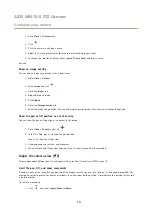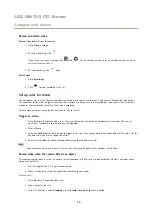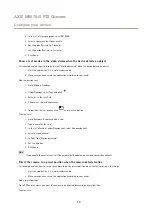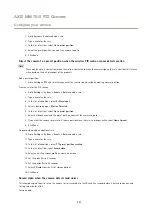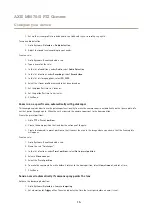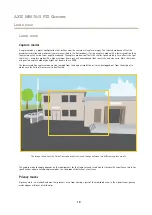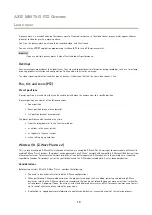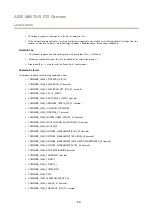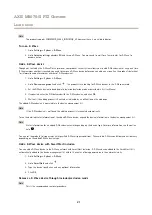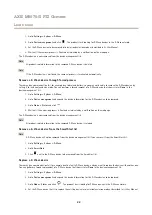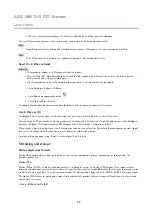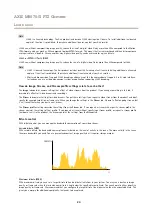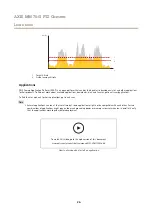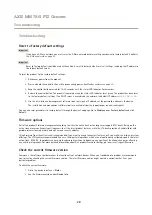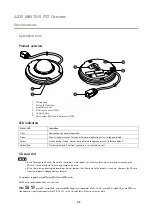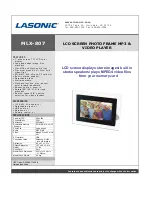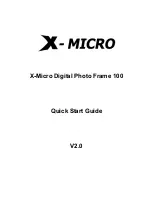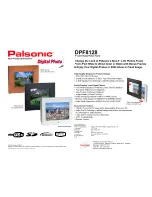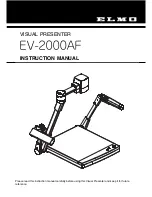
AXIS M5075-G PTZ Camera
Learn more
5. Wait until the replacement process is finalized as indicated by a notification on the web page.
The new Z-Wave device with some status information is now visible in the device management list.
Note
Node ID and event action information is handed over to the new Z-Wave device. All other information is deleted.
Note
If the Z-Wave device is not found, the replacement process is terminated automatically.
Reset the Z-Wave network
Important
• This procedure removes all Z-Wave devices from the product.
• After resetting the Z-Wave network, you also need to either remove each Z-Wave device or reset it to factory default
before you can add it to any network again.
• Use this procedure only when the network primary controller is missing or otherwise inoperable.
1. Go to
Settings > System > Z-Wave
.
2. Go to
Device management
and click
.
3. Click
OK
to confirm the reset.
All added Z-Wave devices are now removed from the product, and the device management list is empty.
Use Z-Wave as I/O
This product doesn’t have any physical I/O connectors, but you can use Z-Wave functions in the I/O interface.
You can assign an I/O port number to up to a maximum of six connected Z-Wave devices. To see the port numbers, go to
Settings >
System > I/O ports
. The I/O port number can be changed in the Z-Wave device’s information window.
When used as a digital input port event, the Z-Wave device can only use one function. The default function depends on what type of
device it is. To change which function to use, go to the device’s information window.
For more information about using I/O ports, see the product's built-in help.
Streaming and storage
Video compression formats
Decide which compression method to use based on your viewing requirements, and on the properties of your network. The
available options are:
Motion JPEG
Motion JPEG, or MJPEG, is a digital video sequence that is made up of a series of individual JPEG images. These images are then
displayed and updated at a rate sufficient to create a stream that shows constantly updated motion. For the viewer to perceive motion
video the rate must be at least 16 image frames per second. Full motion video is perceived at 30 (NTSC) or 25 (PAL) frames per second.
The Motion JPEG stream uses considerable amounts of bandwidth, but provides excellent image quality and access to every image
contained in the stream.
H.264 or MPEG-4 Part 10/AVC
23


